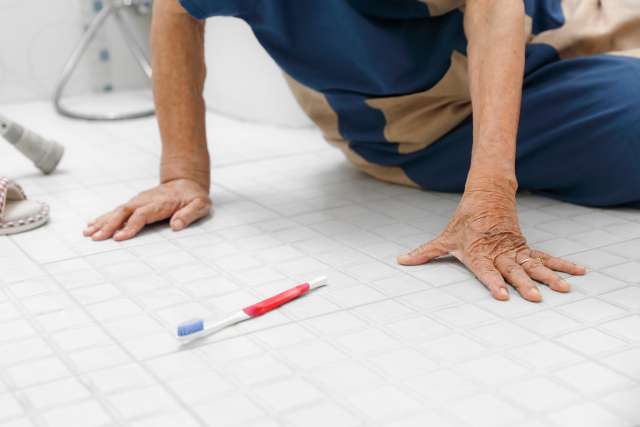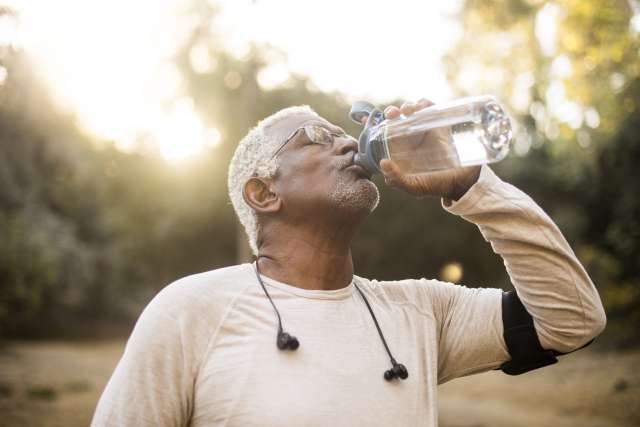Falling is a hazard for everyone at every age. But there are two issues that make falling more perilous as you get older.
First, factors like lack of balance can make you more likely to fall as you age. And second, falls can be more dangerous the older you get. The same stumble that a young adult barely notices can put an older adult in the emergency room.
Your bathroom may be one of the places where your risk of falling is highest. Learn how to prevent falls and stay safer in the bathroom.
Older adults and risk of falls
Little kids fall constantly. And most of the time, they bounce back up with barely a boo-boo. As adults, falling can be more painful. And as an older adult, it can be life-altering.
About 3 million older adults end up in the emergency room each year because of falls, according to the U.S. Centers for Disease Control and Prevention (CDC). Falling is also the cause of 88% of emergency room visits for hip fractures in older adults.
A broken hip — or other fall-related injury — can have lasting effects. For older adults who fall and break a bone, the injury can often leave you less mobile, even after the fracture heals. The frailty that sometimes results from a fall as you age can make you more likely to fall again.
Factors that increase your risk of falling
There are several age-related changes that can increase your risk of falling as you get older. These include:
- Balance problems
- Cognitive decline or dementia
- Foot pain
- Medical conditions that affect your balance, including diabetes, heart disease, nerve and thyroid issues
- Muscle weakness that impacts your ability to walk, balance and react quickly
- Taking medications that cause dizziness or affect your balance (such as some antidepressants, sedatives and blood pressure drugs)
Tips for fall prevention in the bathroom
Falls can happen anywhere — both inside and outside of your home. Preventing falls is key to staying safe.
The bathroom can be one of the riskiest spots in your home, especially considering how many times you go in and out of it each day. In fact, an estimated 80% of falls in the home occur in the bathroom.
The bathroom is hazardous for many reasons. One is that you use the bathroom multiple times a day, and throughout the night (when dim light and sleepiness can make accidents more likely).
The other is that you use the bathroom for a variety of functions, many of which can easily throw you off balance. Getting in and out of the shower, on and off the toilet, drying yourself and dressing are activities that can test your strength and balance as you age.
But there are many steps you can take to make your bathroom a no-fall zone. Safety strategies to reduce bathroom-related injuries include:
- Adding secure grab bars near the shower and toilet
- Brightening up a dim room with better lighting (and a night light for overnight trips to the bathroom)
- Keeping your phone or medical alert device within arm’s reach any time you’re using the bathroom
- Placing non-slip strips or mats on the floor of the tub or shower so you can stand more securely
- Removing rugs or mats from the floor that can slip or increase your risk of tripping
- Sitting down on a shower chair if you feel unsteady on your feet while bathing
In addition to these steps, it’s important to work on maintaining your physical strength and balance. Staying physically active, working to keep your muscles strong and improving your balance will reduce your risk of falling.
You should also talk to your doctor about your risk of falling. They can help you manage any medical conditions that increase your risk. They can also work with you to change up any medications that might make you unsteady on your feet.
What to do if you fall
If you do fall — in the bathroom or anywhere — it’s important to stay calm. Take a few deep breaths while you assess the situation and how you can safely get out of it.
If you wear a watch or device that alerts emergency services that you’ve fallen, help will soon be on its way. If you can reach your phone and need medical assistance, grab it and call 911.
For more minor falls, you may be able to get up on your own, but you need to do it safely. People often fall again while trying to stand up. This can especially be a hazard on slippery bathroom surfaces.
To safely get up on your own, roll over and crawl to a grab bar, the bathroom vanity or a sturdy chair. Use that support to slowly go from sitting on the floor, to kneeling, to standing. Then sit down on a chair and take stock of any injuries.
If you hit your head when you fell, you should seek immediate medical care. And if you experience other pain or injuries that impact your ability to move well, it’s also wise to visit your doctor, urgent care or the emergency room.
Whether you’ve already fallen — or are fearful of it happening — talk to your doctor. They can help you take the right steps to reduce your risk of falling.



